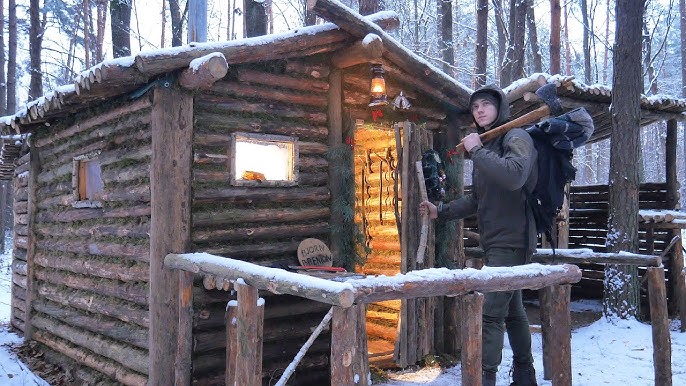Spending a winter in a log cabin is a dream for many—cosy evenings by the fire, crisp mornings surrounded by snow-covered trees, and a slower, more peaceful way of life. But for those who have actually lived through the cold months in a cabin, it’s more than just romantic notions. It requires preparation, resilience, and a few clever survival hacks. Whether you’re considering buying a log cabin for your home, garden, or as a countryside retreat, these firsthand accounts and expert tips will help you make the most of winter cabin living.
Preparing for the Cold
One of the most important aspects of surviving winter in a log cabin is being well-prepared. Those who have lived off the grid through harsh winters stress the importance of stocking up before the snow arrives. This includes:
- Firewood Supply – Ensuring you have a large, dry stockpile of firewood is crucial. Many seasoned cabin dwellers recommend collecting double the amount you think you’ll need to avoid running short.
- Insulation and Draught-Proofing – Older log cabins can be prone to heat loss. Sealing gaps, adding extra insulation, and using thick curtains or rugs can make a huge difference in maintaining warmth.
- Stocking Up on Essentials – Harsh weather can make travel difficult, so a well-stocked pantry with non-perishable food, medical supplies, and emergency items is vital.
Heating and Staying Warm
Keeping a log cabin warm is an art, and those who have done it share a few key strategies:
- Efficient Wood-Burning Stoves – A high-quality wood-burning stove is essential for heating, cooking, and even drying clothes. Investing in a stove that retains heat well can save fuel and effort.
- Layering Clothing – Even with a fire roaring, cabin temperatures can fluctuate. Dressing in layers, wearing wool socks, and using thermal blankets ensure comfort.
- Using Passive Heating – Placing furniture near heat sources, letting sunlight in during the day, and using heat-reflective materials can help retain warmth.
Water and Food Challenges
Living in a log cabin during winter means dealing with potential water shortages and limited access to fresh food. Survivors of winter cabin life recommend:
- Preventing Pipes from Freezing – Wrapping pipes in insulation, using heat tape, and keeping a slow drip running can prevent freezing.
- Melting Snow for Water – If water access is cut off, melting snow is a viable backup, though it should be boiled or filtered before drinking.
- Cooking on a Wood Stove – Slow-cooked stews, hearty soups, and baked goods can be easily prepared on a wood stove, making mealtimes both practical and comforting.
Enjoying the Log Cabin Winter Experience
Despite the challenges, those who have spent winters in log cabins speak of the unmatched beauty and tranquillity of the experience. The sense of independence, the connection to nature, and the deep relaxation of a firelit evening make it all worthwhile.
Owning a log cabin means embracing the best of both worlds—modern comfort with rustic charm. Whether you want a cosy winter escape in your garden or a full-time retreat in the countryside, log cabins offer warmth, character, and a connection to nature that few other homes can provide.
Make Your Log Cabin Dream a Reality
If the idea of wintering in a log cabin appeals to you, why not invest in one for your property? Whether as a peaceful getaway, an additional living space, or a home designed for all seasons, log cabins provide a unique and beautiful way to experience nature—while staying warm and comfortable through even the coldest months.

